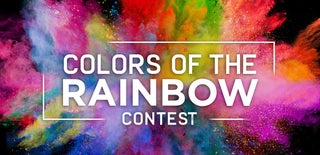Introduction: Rainbow Pride Traffic Lights
How cool is that? Make your own set of traffic lights to light up the way you want. No need to press the "signal to walk" button to strut across the street. Those buttons never worked anyway.
Caution: Attempt no mods on real traffic lights. They are for the public safety of everyone.
Step 1: Pick a Card...
So I have an Adafruit Circuit Playground Express board to play with. This project seems like a good way to learn Circuit Python programming and to get more familiar with the Mu Editor and REPL function.
The board is capable of driving Neopixels which are the LED strips I have encased in the traffic light shells. I have two strips of 11 Neopixels respectively attached to pins A1 and A2 of the board. I am also getting the hang of making those connectors used to connect the Neopixel strip to the board wires. They are called Dupont connectors - female header socket/ male pin similar to those found on jumper wires used for breadboarding. Getting the pin crimp done just right with the crimping tool takes practice.
Code here:
https://gist.github.com/caitlinsdad/3eda32dfb9fd3639ea9dba30c8b77bf0
The light animation was done brute force so the code is not optimized in any way. One of the advantages of developing with Circuit Python is that I was able to quickly change parameters and code. It allowed me to get all the timings and colors working on the correct Neopixels as I went along.
Step 2: Box It Up...
The traffic light shell is made from cardboard.
You can scale it up and make it any size you want.
Layering cardboard gives it the 3D effect of having overlaid panels and such.
Make the bezel front for the traffic lights.
You can attach the "visors" or headlamp covers by gluing in half circles of cardstock. You may want to laminate several layers to make it more rigid.
Once you have the front bezel, you can make the backing box. Add a lip around the bezel to go over the backing box. This helps position and secure the front bezel. No need to really measure, just go around gluing the strip of cardboard as it is fitted right on the backing box. Crease and fold where needed.
I glued in some internal baffles to contain and block the light for each segment of the traffic light.
When working with corrugated cardboard, you may be left with some rough exposed seams. Lately, I have found that using paper towels as a material to paper mache with works pretty well. It bridges and fills gaps. When it dries, it does leave an interesting texture to the piece. I coated the piece with glue to tack down as much as the paper towel fitted over the piece. I then tore it at places where it needed to bend or was bunched up. Go back over everything with glue to saturate and smooth out.
Step 3: Stop and Go...
Put on a few coats of paint just like the city does in repainting real traffic signals. Come to think of it, they repave the roads that were just repaved...
Although it looks more orangey in the pictures, I think I got a yellow that was closer to the shade used on real traffic signals, kinda the school bus yellow - fun fact: that specific color is called National School Bus Chrome named for the original chrome yellow pigment which had lead in it.
I had some of this thin non-woven black fabric - kinda like the stuff used to make recycleable grocery tote bags. I glued in small pieces covering the the cutout holes for the lights. It gives the added blackout look to the traffic lights.
Install the Neopixel strips by poking holes for the wires to pass through. I also stuffed in a bit of fiberfill batting in each chamber to help diffuse the lights some more.
Power it up and check it out.
If you were told not to go play out in the street, you can make your own pedestrian crosswalk sign...
Enjoy!

Participated in the
Colors of the Rainbow Contest













